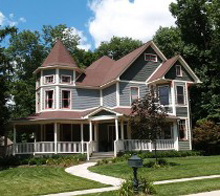 According to the Case-Shiller National Home Price Index, annual home price growth slipped to a seasonally-adjusted rate of 4.80 percent in September. This was 0.30 percent lower than August’s year-over-year reading of 5.10 percent.
According to the Case-Shiller National Home Price Index, annual home price growth slipped to a seasonally-adjusted rate of 4.80 percent in September. This was 0.30 percent lower than August’s year-over-year reading of 5.10 percent.
Cities posting the highest year-over-year gains in home prices were Miami, Florida 10.30 percent, Las Vegas, NV with a gain of 9.10 percent, San Francisco, California posted a gain of 7.90 percent, Dallas home prices gained 7.40 percent and home prices increased by 6.70 percent in Portland, Oregon.
David M. Blitzer, chairman of the S&P Dow Jones Index Committee, said that Florida and the Southeastern region showed sustained strength. Citing gains in builder confidence and housing starts and pre-crisis levels for foreclosures and mortgage defaults, Mr. Blitzer said that the outlook for housing in 2015 should be “stable to slightly better.”
Analysts said that higher inventories of available homes had slowed home price growth. Cooling home prices allow more buyers into the market, which creates a better balance between buyers and sellers. Rapidly increasing home prices in late 2013 through early 2014 forced buyers onto the sidelines as investors and cash buyers drove home prices higher and raised demand for available homes.
Cities Post Incremental Month-to-Month Gains
Case-Shiller’s 10-and 20-City Home Price Indices were 15 and 17 percent below their mid-2006 peaks with 18 of 20 cities tracked showing slower growth in September than in August. Top month-to-month gains were incremental, with Miami, Florida and Charlotte, North Carolina gaining 0.60 percent, Las Vegas, Nevada gained 0.40 percent and Dallas, Texas gained 0.30 percent. Denver, Colorado, Tampa, Florida and Portland, Oregon posted month-to-month gains of 0.20 percent.
Cities posting no month-to-month gain included Los Angeles, California and New York City.
The steepest decline in month-to-month home prices was seen in Washington, D.C. at -0.40 percent., followed by Atlanta, Georgia at -0.30 percent San Francisco, California, Atlanta, Georgia, Chicago, Illinois, Detroit, Michigan and Seattle Washington posted month-to-month declines in home prices of -0.20 percent. San Diego, California and Boston, Massachusetts posted declines in month-to-month home prices of -0.10 percent.
FHFA House Price Index Unchanged in September
The Federal Housing Finance Administration posted no gain on its month-to-month reading for September, although analysts had expected a gain of 0.40 percent from August to September. Year-over-year, FHFA reported a 4.50 percent gain in home prices between the third quarter of 2013 and the same period in 2014.
On a positive note, Seasonally-adjusted home prices for purchase-only transactions rose in 40 of 50 states during the third quarter of 2014. The top five states posting the highest annual home price gains were Nevada, Hawaii, California, North Dakota and Florida.

 After months of reports of slowing home price momentum and forecasts of a lagging housing market, we are pleased to report an increased volume of existing home sales as reported by the National Association of REALTORS®.
After months of reports of slowing home price momentum and forecasts of a lagging housing market, we are pleased to report an increased volume of existing home sales as reported by the National Association of REALTORS®. Last week’s economic news included several housing-related reports that provided mixed results with lower than expected sales of previously owned homes and higher than expected sales of new homes. The FHFA also released its House Price report for July, which noted that year-over-year home prices were lower than year-over-year prices reported in June. Here’s a look at the details:
Last week’s economic news included several housing-related reports that provided mixed results with lower than expected sales of previously owned homes and higher than expected sales of new homes. The FHFA also released its House Price report for July, which noted that year-over-year home prices were lower than year-over-year prices reported in June. Here’s a look at the details: Sales of previously owned homes fell in August according to the National Association of REALTORS®. This was the first decline in sales in five months. Although not welcome news to homeowners and real estate pros, there is good news. Lawrence Yun, chief economist for the National Association of REALTORS®, as first-time buyers and moderate income families may now have an opportunity to find and buy affordable homes.
Sales of previously owned homes fell in August according to the National Association of REALTORS®. This was the first decline in sales in five months. Although not welcome news to homeowners and real estate pros, there is good news. Lawrence Yun, chief economist for the National Association of REALTORS®, as first-time buyers and moderate income families may now have an opportunity to find and buy affordable homes. Last week’s economic news included several reports related to housing. The Case-Shiller and FHFA reports for June showed a further slowing in home price growth. New home sales for July fell short of the expected reading, but pending home sales exceeded expectations. The details:
Last week’s economic news included several reports related to housing. The Case-Shiller and FHFA reports for June showed a further slowing in home price growth. New home sales for July fell short of the expected reading, but pending home sales exceeded expectations. The details: